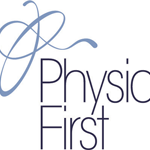Welcome to Hart Physio’s patient resource about Achilles tendinopathy.
Achilles tendiopathy is a relatively common condition characterised by tissue damage and pain in the Achilles tendon. There are two calf muscles in the lower leg that blend to form the Achilles tendon.

Causes of Achilles Tendinopathy
- Can be due to repetitive or prolonged activities placing strain on the tendon.
- Excessive walking, running or jumping.
- An explosive, one off activity such as a sudden acceleration on the tennis court.
- Can be associated with a calf tear or after a poorly rehabilitated sprained ankle.
Symptoms of Achilles Tendinopathy
Pain tends to be local and in the region of the heel bone. The symptoms are often most noticeable after a period of rest from more stressful activities or first thing in the morning. These provocative activities tend to include walking, running excessively, jumping or during heel stretches. In more severe cases the pain will persist when walking and can cause a person to limp. It is not uncommon for there to be swelling and noticeable thickening within the tendon and some local tenderness.
Diagnosis
A thorough subjective and objective examination from a Physiotherapist is usually sufficient to diagnose a tendinopathy. However, in circumstances where a tear is suspected or where there is a very slow resolution further investigations such as a MRI or ultrasound are requested.
What causes Achilles Tendonopathy?
There are several factors which can predispose patients to developing this condition. These need to be assessed and corrected with direction from your Physiotherapist. Some of these factors include:
- joint stiffness (particularly the ankle)
- muscle tightness (particularly the calfs)
- inappropriate or excessive training
- poor biomechanics
- poor foot posture (i.e. flat feet or high arches)
- inappropriate footwear
- inadequate warm up
- muscle weakness
- poor proprioception or core stability
- being overweight
How can Hart Physio help Achilles Tendinopathy?
Physiotherapy treatment for patients with an Achilles injury is vital to hasten the healing process, ensure an optimal outcome and therefore reducing the likelihood of recurrence. Treatment may comprise of:
- soft tissue massage
- electrotherapy (e.g. ultrasound)
- the use of crutches
- the use of heel wedges
- the use of a protective boot or night splint
- stretches
- joint mobilisation
- ice or heat treatment
- exercises to improve strength, flexibility, core stability and balance
- education
- anti-inflammatory advice
- activity modification advice
- hydrotherapy
- biomechanical correction (e.g. the use of orthotics)
- footwear advice
- a gradual return to activity program
Most patients with this condition heal well with appropriate Physiotherapy. This, however, can be a lengthy process and the healing may take up to 6 months in those who have had their condition for a long period of time. Early Physiotherapy treatment is vital to hasten recovery in all patients with this condition. The aim of Physiotherapy is to minimise the earlier acute phase and then promote your body’s healing through guidance with appropriate exercises.




